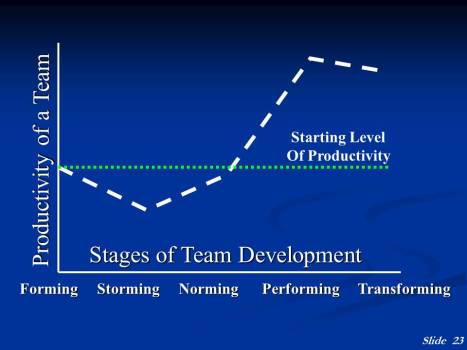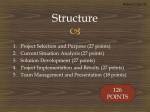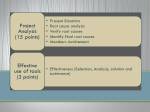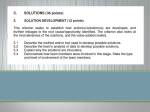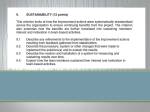BRAINSTORMING. I want to introduce here, a variant of conventional brainstorming which is much more effective than that most of us are familiar with. In conventional approach. To review, here are the basic steps of conventional Brainstorming.
(Step 1) Write down the topic to brainstorm (To find a solution to the frequent breakdown of ABC Machine)
(Step 2) Remind team members of the basic rules (one by one, ‘pass’, speed, time limit for the session (which is usually <10 minutes)
(Step 3) Start the contribution of ideas from the team (Leader/recorder to jot down ideas)
(Step 4) Grade the ideas (Grade A, B, C, and D) together
(Step 5) Pick out the Grade A ideas to develop further, discard the grade D ideas. When time permits, move onto Grade B and Grade C ideas.
Weaknesses. Although useful, there are several inherent weakness of conventional Brainstorming. Firstly, it assumes that everyone present think at the same speed – which we know is not the case. Those ‘fast thinkers’ will become impatient as they have to wait for the slower ones to finish before he is given his next opportunity to speak again. Naturally, the session, instead of stimulating their creativity, stifles theirs. On the other hand, the naturally slower (but careful) and creative member of the group feel pressured to think ‘faster (or more carelessly)’. Forced to think faster, this member will inevitably.
IDEA WRITING. Idea Writing is a more liberal approach compared to conventional Brainstorming, and it is less likely to lose ideas.
1) Set everyone around a round table. Reserve an empty space in the centre
2) The leader writes the subject on a white-board for all to see.
3) Allow clarification of the subject for brainstorming before starting. Give all members a A4 size white paper. This can be lined or without lines.
4) Each member copies the Subject Title on the top of the page.
The subsequent steps can be divided into three phases (A) Compilation (B) Consolidation (C) Refinement. These are explained below.
A. COMPILATION. (i) Each member enters one idea on the top of his paper and return it to the empty centre space (ii) He then exchange a random with another member’s returned paper (iii) Continue to enter ideas and exchange until he is exhausted. He is allowed to read others’ ideas and build on them (iv) Leader stops the exercise after 10 to 15 minutes
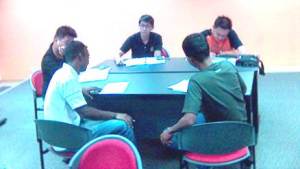 COMPARE TO CONVENTIONAL BRAINSTORMING. The advantage over conventional brainstorming is that, everyone can put out ideas at their own pace, and they can also view others’ ideas at the same time. While conventional brainstorming is going in a linear, single file, Idea Writing is simultaneously allowing all members to suggest and think at their own pace in suggesting ideas. No one feels pressured, no one feels restricted, it is free-flow of ideas, or everyone is allowed to pour ideas at their own pace. When I conduct these sessions, I can see the ‘fast thinker’ going fast and are happier, while the ‘slow and careful’ thinkers are also enjoying their intense moments.
COMPARE TO CONVENTIONAL BRAINSTORMING. The advantage over conventional brainstorming is that, everyone can put out ideas at their own pace, and they can also view others’ ideas at the same time. While conventional brainstorming is going in a linear, single file, Idea Writing is simultaneously allowing all members to suggest and think at their own pace in suggesting ideas. No one feels pressured, no one feels restricted, it is free-flow of ideas, or everyone is allowed to pour ideas at their own pace. When I conduct these sessions, I can see the ‘fast thinker’ going fast and are happier, while the ‘slow and careful’ thinkers are also enjoying their intense moments.
B. CONSOLIDATION.
(i) At random, each member will pick one paper.
(ii) The member to the right of the leader will start reading the idea, one at a time.
While the leader is reading from his list, all the other members are tasked to check the ideas on the list he is holding, to see if there are duplicates. Duplicated ideas are eliminated. This is how ideas are eliminated – if the member suspects that there is a duplicated idea on his list, the member reads out and check with the originator (the one who pen the idea). Note that, it is easy to know who wrote the idea – as the idea is in the originator’s own handwriting. If the originator agrees that it is the same idea read out, then the idea is cancelled. The originator can object and assert that it is not a duplication by offering a clarification on how his idea differs. This way, everyone can have a chance to speak out. When the list is completed, the next member will start reading his list.  COMPARE TO CONVENTIONAL BRAINSTORMING. Very often in conventional brainstorming, the ideas are written down by the leader on a flip chart. There are times when the leader ‘rephrases’ a contributor’s idea. After several minutes, it is possible the contributor may not be able to ‘recall’ what his ‘actual idea was’ as the idea was actually rephrased. Sometime the distortion is even greater, if the writer is not the leader. Sometimes the contributor ‘had to agree’ with the leader’s words/sentence as he or she is under pressure to agree with the one who is writing. In Idea Writing, each pens down their idea in their exact words. Furthermore, at this point, time is set aside to listen to the contributor.
COMPARE TO CONVENTIONAL BRAINSTORMING. Very often in conventional brainstorming, the ideas are written down by the leader on a flip chart. There are times when the leader ‘rephrases’ a contributor’s idea. After several minutes, it is possible the contributor may not be able to ‘recall’ what his ‘actual idea was’ as the idea was actually rephrased. Sometime the distortion is even greater, if the writer is not the leader. Sometimes the contributor ‘had to agree’ with the leader’s words/sentence as he or she is under pressure to agree with the one who is writing. In Idea Writing, each pens down their idea in their exact words. Furthermore, at this point, time is set aside to listen to the contributor.
C. REFINEMENT.
(i) Once the discussion is completed, the leader will collect all the papers and consolidate the ideas which are not cancelled. These are unique ideas. The team can choose to discuss, expand, combine, or even create new ideas from here.
(ii) A list of good ideas will emerge. 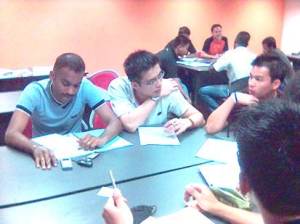
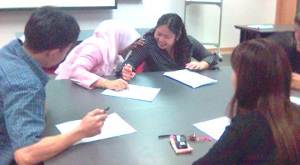
You will notice that by this time, everyone is talking and expressing their ideas freely…a sharp contrast to the serious Traditional Brainstorming.
Try it.
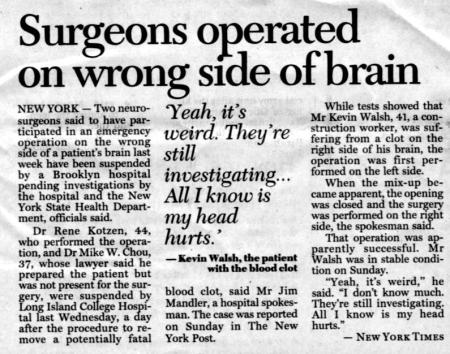 This is a ridiculous medical blunder.
This is a ridiculous medical blunder. Inside the 12-steps of Problem Solving posted by me in the previous posts are areas which can help us not to make mistakes. The intent is to move away from single cause for problems until we have satisfactorily ruled out the other unlikely causes.
Inside the 12-steps of Problem Solving posted by me in the previous posts are areas which can help us not to make mistakes. The intent is to move away from single cause for problems until we have satisfactorily ruled out the other unlikely causes.


 Posted by CHIA YewHeng
Posted by CHIA YewHeng 